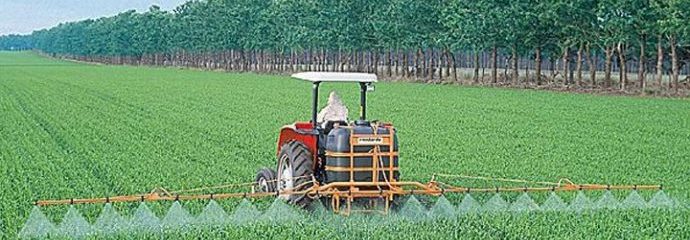 by Alan Harman –
by Alan Harman –
With summer crop production in full swing, pesticide spray drift can cause damage to neighboring property owners, but they aren’t without recourse, a Texas A&M AgriLife Extension Service specialist says.
“It is important for landowners to understand the rules and to know what to do before applying pesticides or in the event they suffer damages due to spray drift,” says agricultural law specialist Tiffany Dowell Lashmet.
“Farmers on both sides of the issue – those applying pesticides and those neighboring landowners – should take care to understand the rules and responsibilities involved with pesticide application,” she says.
“In almost every instance, both farmers and neighbors have the same goal – avoiding drift issues and ensuring that everyone can harvest a good crop.”
As with every legal issue, it is always a good idea to try dealing with neighbor issues over a cup of coffee instead of in a courtroom.
“Talking to your neighbor about these issues is a good place to start and can sometimes resolve problems without ever needing to get the legal process involved,” Lashmet says
Ideally, she says, this type of conversation would occur before pesticides are ever applied.
Discussing when and where application may occur, particularly near sensitive crops, can help avoid damage altogether. Making sure neighboring landowners know what crops may be growing nearby is also important.
For farmers preparing to apply pesticides, following the rules is key, Lashmet says.
“The label is the law, and it is critical that applicators strictly follow label requirements.”
Additionally, applicators should be familiar with all rules for spraying in their location, she says. Keeping accurate logs and records is extremely important for all applicators.
Unfortunately, sometimes drift does occur, Lashmet says.
In this event, the damage should be carefully documented.
This should include taking photographs or samples of damaged crops or foliage, documenting wind speed, direction, temperature, and getting statements from any witnesses who might have seen the application.
“The more documentation an injured farmer has, the better his chances of recovery will be,” Lashmet says.
An injured landowner might want to consider a civil lawsuit against the applicator, she says.
“There are a number of potential claims that may be considered depending on the factual situation, including nuisance, trespass, negligence and others,” Lashmet says.
“In the event that a lawsuit is filed, having the documentation and evidence discussed will be extremely useful for the landowner.”
Landowners should not wait to seek legal advice, she says, as statutes of limitations apply to these claims and generally begin running at the time the damage occurs.
“With consideration for other landowners, careful preparation and ensuring that rules are followed, farmers should have no problems with pesticide application to crops,” Lashmet says.
CATCH THE BUZZ – Pesticide Drift Can Harm Bees, Wildlife, and Other Farm Crops

